39 F. high Thursday in the Twin Cities.
38 F. average high on November 21.
62 F. high on November 21, 2012 (!)
.01" rain fell yesterday, freezing into glaze ice during the late afternoon and evening.
Trace of snow fell at MSP International yesterday.
November 21 in Minnesota Weather History:
1996:
Heavy snowfall accumulated over the same areas that were hit two days
earlier. Four to seven inches of snowfall were reported across the area.
Heavier snowfall occurred during the daylight hours of the 23rd.
Snowfall totals of six inches were reported in the Twin Cities,
Chanhassen, Stewart, St. James and Redwood Falls.
1970: Gale driven snow across Minnesota. 45 mph winds over Rochester and Duluth.
Winter Whispers
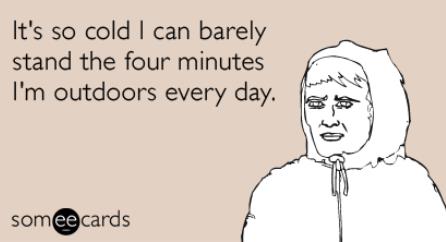
Life
is random; our future ultimately unknowable. Maybe that's why we take
some small comfort in the weather forecast. It's one of the few things
we can anticipate with any level of skill.
Perfect? Not by a long
shot. The 24-hour forecast accuracy, nationwide, is 88 percent. It's
human nature to remember the 12 percent of the time we blow it. Day 3-7
accuracy is improving about 1 percent every year, and new technology has
made "surprise" tornadoes, floods & blizzards more unlikely.
Predicting the future is hard. Ask any stock broker or economist. How's your fantasy football team doing? Welcome to my world.
NOAA
is predicting a slight cool bias for the Red River Valley into
February; no clear trend toward wetter or drier weather for the Upper
Midwest. The 90-day outlook is interesting to ponder, but confidence
levels are very low, especially this winter. I still think we'll wind up
slightly milder; an earlier spring in 2014 than we had this year.
Expect
colder than average temperatures into Thanksgiving week but no major
storms close to home. A soaking rain may slow things down out east
Tuesday & Wednesday; long-range guidance now hinting at a warming
trend by the first week of December.
Fresh Air.
ECMWF guidance suggests temperatures will struggle just to reach 20F in
the MSP metro area Saturday, a slow warming trend kicking in Sunday and
Monday before another cool-down by the middle of next week. No big
storms are brewing next week, a clipper-like system may spark a dusting
or coating of light snow next Thursday night. Graph: Weatherspark.
Ski Texas.
The 12km NAM model shows some (very) plowable amounts of snow over
northern Texas and southern Oklahoma. Skiers will be happy over southern
Colorado - lake effect snows piling up as deep as 4-8" into Sunday
night. Map: NOAA and Ham Weather.
Blue Norther.
That's what they call vigorous Canadian cold fronts racing across
Texas, capable of dropping temperatures 40F or more in the span of a few
hours, sometimes under blue skies. The 32F isotherm pushes as far south
as Mexico, helping to whip up significant snow and ice across Texas. A
frost/freeze is possible from Huntsville to Atlanta by Sunday morning.
Animation: NOAA and Ham Weather.
Coldest Weather Into Early December: New England.
The winds aloft will be "modified Pacific" for much of the central and
western USA into the first week of December, the coldest winds of Canada
brushing New England over the next 1-2 weeks. Map: NOAA.
Extended Temperatures Outlook.
The map above shows NAEFS guidance between November 29 and December 5, a
chilly bias for much of the south and east, while temperatures begin to
moderate over the rest of the USA. Map: NOAA.
A Wintry Sting.
The coldest air of the winter season is draining south, sparking heavy
snow over the southern Plains by Sunday, a noticeable wind chill east of
the Rockies. In today's
Climate Matters we track the chill, define a "Blue Norther" and take a look at Thanksgiving weather for a few select cities across the USA: "
WeatherNationTV
Chief Meteorologist Paul Douglas shows the newly released NOAA Winter
outlook which gives 50/50 chances for much of the US. The Thanksgiving
forecast is looking a bit chilly, especially depending on where you
live. And Finally, just what is a Blue Norther? And why can it cause a
60° temp drop in a few hours?"
Winter Temperature Outlook. NOAA just released their
latest prediction
for December through February. Their Climate Prediction Center shows a
cool bias for the Dakotas and Red River Valley, considerably warmer than
average temperatures expected over the southern USA and portions of New
England, as well as western Alaska. Interesting fodder for casual
conversations about the weather, but (as always) don't bet the farm
based on (any) long range forecast.
NOAA's Winter Precipitation Outlook.
This is something of a head-scratcher, a slight dry bias for portions
of the Southwest and Southeast, wetter/snowier than average for the
northern Rockies, otherwise go ahead and flip a coin - most of America
forecast to see winter precipitation very close to average.
* Mile Halpert at NOAA's Climate Prediction Center has a video clip with more details
here.
Super Bowl 2014 Forecast: 50 Years Of Weather Stats Hint At Mother Nature's Playbook.
Speaking of vague, nebulous long-range forecasts. When in doubt, which
is much of the time, come to think of it, go with the long-term weather
averages. Here's an excerpt of a good story about Super Bowl 2014
weather predictions for New Jersey from The Star Ledger at
nj.com: "
Throw
out the Farmer’s Almanac. The forecast for kickoff time at Super Bowl
XLVIII at MetLife Stadium: Partly cloudy with temperatures in the mid-
to upper-30s. Obviously, pinning down the exact forecast for the big
game three months out is impossible, but statistically, based on
historical records provided by the state’s climatologist, that is the
most likely scenario when the nation’s most prominent sporting event
comes to New Jersey. Could it be 65 degrees and clear? Sure. Could it be
20 with blizzard conditions? It’s not out of the question..."
Photo credit above: "
A chilly, but dry evening is the most likely weather for kickoff at the Super Bowl at MetLife Stadium."
(Robert Sciarrino/The Star-Ledger).
Judah Cohen's Winter Outlook: A Downer For East Coast Winter Weather Lovers.
Cohen specializes in long range forecasting, and his recent track
record is impressive. He has perfected the art of linking snowcover in
Sibera with weather downwind over North America, but this year he sees
conflicting signals. Here's a clip from an interview conducted with
The Capital Weather Gang: "...
I
have to admit that I am struggling with how to interpret the
conflicting predictions based on Siberian snow cover. . . . Based on
what I have seen so far the hemispheric circulation of the atmosphere
has evolved more consistently as if the Siberian snow cover was below
normal or closer to the prediction derived from the SAI. Therefore, this
favors an overall positive winter AO. However I do see signs, based on
the large-scale energy propagation of the atmosphere, that favor
building of high pressure in the mid-high latitudes in the near term and
that should help to support colder temperatures and even a negative AO
right at the start of winter. Eventually I would expect atmospheric
conditions to favor a more positive AO but that is no guarantee..."
Graphic credit above: "
The correlation between the Snow Advance Index (SOI) and Arctic Oscillation (AO) over time." (Judah Cohen).
Persistent Drought.
NOAA's forecast
through the end of February, 2014, shows drought conditions persisting
from much of the Midwest into the Southwest. Drought conditions are
forecast to develop over the Southeast, from Mobile to Atlanta,
Jacksonville and the Carolinas.
Oregon Department Of Forestry Experiences Record-Breaking Wildfire Season. More details from
OregonLive.com; here's the intro: "
Oregon
Department of Forestry officials will report to a legislative committee
on Thursday about the costs of the wildfire season, asking for money to
balance the books. This happens every year, but this time the numbers
are historic. "This was the most costly season in history," said Dan
Postrel, ODF spokesman. The season cost ODF a record $122 million and burned more than 100,000 acres of land under the department's responsibility. That's the most acreage scorched in one season in 60 years, Postrel said..."
Photo credit above: "
The
Douglas complex in southern Oregon was one of the most challenging
wildfires during the 2013 season, persisting until mid-September."
(Randy L. Rasmussen/The Oregonian)
Losses From Extreme Weather Rise To $200 Billion A Year Over Past Decade.
Reuters has the story; here's an excerpt: "
Global
economic losses caused by extreme weather events have risen to nearly
$200 billion a year over the last decade and look set to increase
further as climate change worsens, a report by the World Bank showed on
Monday. A United Nations' panel of
scientists has warned that floods, droughts and storms are likely to
become more severe over the next century as greenhouse gas emissions
warm the world's climate. "Economic losses
are rising - from $50 billion each year in the 1980s to just under $200
billion each year in the last decade and about three quarters of those
losses are a result of extreme weather," said Rachel Kyte, World Bank
Vice President for Sustainable Development...
Which Countries Are Most At Risk From Super Storms And Extreme Weather? AlterNet has the story - here's an excerpt: "...
All
ten of the countries most at risk from extreme events in the 1993 to
2012 period were developing countries, emphasizing the message in Warsaw
that poor countries cannot cope with the increasing number of
catastrophes by themselves. The major issue at the conference in the
wake of the current Philippine disaster is how to finance “loss and
damage” caused by an increasingly unstable climate. The index, compiled
by a think tank called Germanwatch from figures supplied by the giant
re-insurance company Munich Re, lists ten countries most affected in
2012 and the long-term climate risk from loss of life and damage from
1993 to 2012..." (Image: NASA).
You Can't Censor Smog. China knows it has a big problem - here's a clip from
Slate: "
China
is a notoriously difficult country for outsiders to get a handle on,
but two things are immediately obvious the second you exit the airport.
One, that the country is undergoing an unprecedented level of economic
growth. Two, the country is in the midst of an ecological catastrophe.
You literally breathe in both of them. Despite all I had read before
going to China last month, I was a bit blasé about Beijing’s famous
smog. I’ve lived in cities all my life and once spent a few months in
Moscow—a place not exactly known for its pristine air quality. Surely,
for a three-day visit, it couldn’t be that bad..."
The IPO Of You And Me: How Normal People Are Becoming Corporations.
Would you be willing to take some up-front cash now for a percentage of
future earnings? Some people are doing just that, as reported at
New York Magazine; here's an excerpt: "
What
do Twitter, Berkshire Hathaway, and your best friend Dave have in
common? Pretty soon, you might be able to buy stock in all three. We've
heard a lot about corporate personhood – the idea that, as one former
Massachusetts governor put it, "Corporations are people." But there's a
new hot concept in the land of personal finance: personal corporatehood,
the notion that people can act like corporations. Increasingly, amid
record-high stock markets that have rewarded anything with a ticker
symbol, normal people are finding new ways to sell stock, lash
themselves to investors, and throw themselves at the market's mercy..."
When Your TV Is Watching You. If you weren't already creeped out, you will be after reading this story at
DoctorBeet's Blog; here's an excerpt: "
Earlier
this month I discovered that my new LG Smart TV was displaying ads on
the Smart landing screen. After some investigation, I found a rather creepy corporate video advertising
their data collection practices to potential advertisers. It's quite
long but a sample of their claims are as follows: LG Smart Ad analyses
users favourite programs, online behaviour, search keywords and other
information to offer relevant ads to target audiences. For example, LG
Smart Ad can feature sharp suits to men, or alluring cosmetics and
fragrances to women..."
Manta Resort Offers A Private Island Where You Sleep Beneath The Waves. Gizmag has a story about a very unique hotel; here's a clip: "
Underwater accommodations seem to have become a trend
among hotels in recent years, but a resort off the coast of Tanzania is
now putting a unique spin on the concept. The Manta Resort recently
unveiled its Underwater Room, a three-floor suite that floats beside a
thriving coral reef and boasts a submerged master bedroom surrounded by
windows to view the local sea life..."

TODAY: Partly sunny, almost average. Winds: SW 10. High: 32
FRIDAY NIGHT: Few flurries, then windy and sharply colder. Low: 13
SATURDAY: Sunny, a fine arctic breeze. Wind chill: 5. High: near 20
SUNDAY: Plenty of sun, not as cold. Wake-up: 14. High: near 30
MONDAY: Intervals of sun, thawing out. Wake-up: 29. High: 37
TUESDAY: A colder clipper, still dry under partly sunny skies. Wake-up: 23. High: 30
WEDNESDAY: Chilliest day next week. Cold sun, good travel. Wake-up: 13. High: 21
THANKSGIVING DAY: Fading sun, flurries at night? Wake-up: 14. High: 25
Climate Stories...
Just 90 Companies Caused Two-Thirds Of Man-Made Global Warming Emissions. Details from
The Guardian: "
The
climate crisis of the 21st century has been caused largely by just 90
companies, which between them produced nearly two-thirds of the
greenhouse gas emissions generated since the dawning of the industrial
age, new research suggests. The companies range from investor-owned
firms – household names such as Chevron, Exxon and BP – to state-owned and government-run firms. The analysis, which was welcomed by the former vice-president Al Gore as a "crucial step forward" found that the vast majority of the firms were in the business of producing oil, gas or coal, found the analysis, which has been accepted for publication in the journal Climatic Change..."
Graphic above courtesy of
Carbon Majors.
* Andrew Revkin at
The New York Times asks, are these 90 companies to blame, or are we, as consumers of these products and services, ultimately to blame?
Cheap But Imperfect: Can Geoengineering Slow Climate Change? God help us if it gets to the point where we're pouring chemicals into the stratosphere to try to cool things down. Let's hope it doesn't get to that point. The German publication
Der Spiegel has the story - here's the intro: "
Canadian
environmental scientist David Keith wants to change the world's climate
by creating a type of sun filter in the sky to halt global warming. In
an interview, he argues the technology is effective and inexpensive, but
critics liken it to a nuclear bomb. While delegates meeting in Warsaw
at the United Nations climate talks push for targets for reducing
greenhouse gases, a small splinter group of scientists is promoting an
entirely different approach to fighting climate change: They want to
artficially manipulate the planet's climate to help stop global warming..."
Image credit above: ESA. "
The
1991 explosion of the Mount Pinatubo volcano in the Philippines.
"Aerosoles in the stratosphere reduce the rate of climate change," says
David Keith."
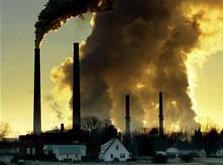 Unavoidable Answer For The Problem Of Climate Change
Unavoidable Answer For The Problem Of Climate Change. Here's a clip from a story at
The New York Times: "...
It
brings into sharp focus the most urgent challenge: How will the world
replace fossil fuels? Can it be done fast enough, cheaply enough and on a
sufficient scale without nuclear energy? For all the optimism about the
prospects of wind, sun and tides to power our future, the evidence
suggests the answer is no. Scrambling to find an alternative fuel to
generate some 30 percent of its power, Japan had no choice but to turn
to coal and gas..."
Globe's Unbroken Warm Streak Approaches 29 Years. Details from
Climate Central; here's the introduction to the article: "
The
globe’s unbroken hot streak is inching closer to 29 years, with new
data showing that October was the 344th consecutive month with global
average surface temperatures above the 20th century average. According
to data from the National Oceanic and Atmospheric Administration released
on Monday, the global average surface temperature for the month
of October was 1.13°F above the 20th century average (1961-1990) for the
month. That’s enough to make this the seventh-warmest October on record
in what is also likely to be the seventh-warmest year on record,
according to a recent report from the World Meteorological Organization.
The last time the globe had a cooler-than-average month was February
1985, and the last cooler-than-average October occurred in 1976, shortly
before Jimmy Carter beat Gerald Ford in that year's presidential
election..."
Graphic credit above: "
Global temperature departures from average for October 2013, which was the seventh-warmest October on record." Credit: NOAA.
Coal Seen As New Tobacco Sparking Investor Backlash: Commodities. Bloomberg has the story; here's an excerpt: "
About
$8 trillion of known coal reserves lie beneath the earth’s surface. The
companies planning to mine and burn them are being targeted by a
growing group of investors concerned with the greenhouse gases that will
be made. Storebrand ASA (STB), which manages $74 billion of assets from Norway, sold out of 24 coal and oil-sands companies since July including Peabody Energy Corp. (BTU), the largest U.S. coal producer, citing a desire to cut fossil-fuel industry holdings. This month Norway’s opposition Labour Party proposed banning the country’s $800 billion sovereign wealth fund from coal investments..."
Photo credit above: "
Coal,
whose burning spews about twice the greenhouse gases as natural gas, is
not in retreat. In 2011, coal was used to generate 30.3 percent of the
world’s primary energy, the highest level since 1969, according to the
World Coal Association, an industry trade group. That share slipped only
to 29.9 percent last year." Photographer: Dadang Tri/Bloomberg.
Oxygen Nation: Whatever Your Politics, Embrace Your Inner Tree Hugger. It turns out we're all tree huggers, according to Minnesota native Craig Bowron. Here's an excerpt of a his recent essay at
Huffington Post: "...
This
kind of branding trivializes the battle over climate change as an
alarmist ploy from the "greenies," who care more about spotted owls and
rare Amazonian frogs than they do their fellow humans. It gives the
appearance that the struggle isn't about the science or its
implications, but only about a way of life. It's the Audubon Society
against the NFL. You stare at your birds, I'll stare at my flat-screen
TV. Rather conveniently, this cognitive severing of the intimate link
between ourselves and the rest of the Earth allows us to take what we
think we need, whatever the cost, the way condemning natives as godless
savages greased the wheels of Colonialism..." (photo credit: Wikipedia Commons).
The 10 Dumbest Things Climate Deniers Say. MarketWatch has the Op-Ed; here's an excerpt: "...
Here’s a paraphrased summary of Diamond’s classic rhetorical one-liners with links to some of our relevant commentaries:
1. Climate costs must be balanced against jobs and the economy
David Suzuki: Energy Choices Risk Climate Chaos For Atlantic Canada. Here's a clip from a story at Vancouver's
straight.com: "...
For his captivating documentary, Climate Change in Atlantic Canada,
Ian Mauro, an environmental and social scientist at Mount Allison
University in New Brunswick, interviewed farmers, fishers, local
residents, First Nations community members, scientists and business
people from all around the Atlantic provinces. All say climate change is
affecting their communities and livelihoods. They also agree something
must be done and that the “business as usual” scenario is no longer an
option. The heart of the problem is our seemingly unquenchable thirst
for mainly fossil-fuel based energy resources. As our desire for comfort
and efficiency grows, so does our energy consumption, prompting the
search for sources increasingly difficult to extract..."
The Actual Probability Of Earth Going To Hell In The Next Few Decades.
Gizmodo takes a look, with the aid of cutting-edge model visualizations, in this story - here's an excerpt: "...
We
wanted to find a way of communicating climate risks in a way that
showed exactly what climate scientists meant when they say likely or
unlikely," co-producer Owen Gaffney told Sploid, "while the terminology
can sound a little vague, it is more precise than most people realize."
The visualization—funded by the UN Foundation for the launch of the
Intergovernmental Panel on Climate Change and made by our friend Felix Pharand Deschenes—is
based on 2013 Intergovernmental Panel on Climate Change data. It ties
the IPCC findings with the effects of the Anthropocene, the new
geological era that refers to the effect of humans on Earth ecosystems,
including the transformation of terrain and life all around us..."
Africa's Green Shoots. Africa is bearing a disproportional amount of the impact of a warming climate, as reported in this article at
BusinessDay; here's a snippet: "...
If
a sign of things to come were needed, one would do well to look at
Africa, which is already highly vulnerable to climate variability.
Further volatility could be ruinous. Two-thirds of the continent is
desert or drylands, and three-quarters of its agricultural drylands are
significantly degraded. The Sahara Desert is expanding: Lake Chad, for
example, is now one-tenth of its size a half-century ago. The worst
conditions are in the Horn of Africa and the Sahel, where drought and
famine have left more than one million children at risk of severe
malnutrition. Africa emits a mere 4 percent of the world’s CO2, but it
suffers most from its ill effects. That said, Africans bear some of the
blame, too: for example, four million hectares of African forest
disappear annually – twice the global rate of deforestation..."
 Life
is random; our future ultimately unknowable. Maybe that's why we take
some small comfort in the weather forecast. It's one of the few things
we can anticipate with any level of skill.
Life
is random; our future ultimately unknowable. Maybe that's why we take
some small comfort in the weather forecast. It's one of the few things
we can anticipate with any level of skill.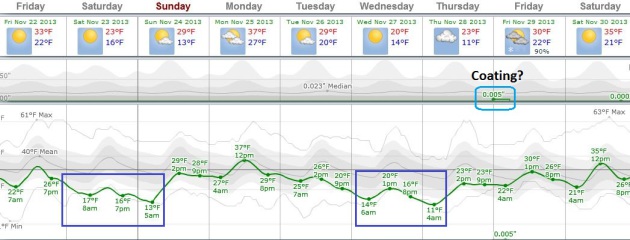
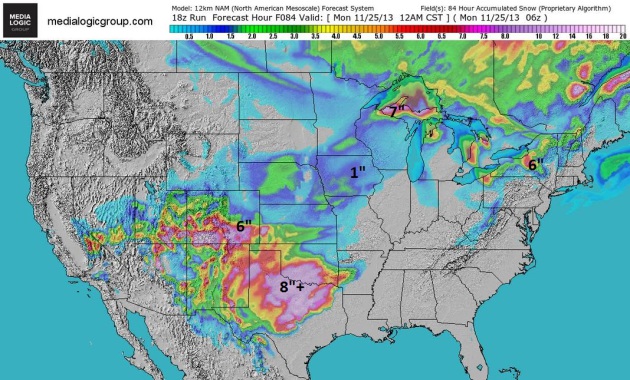

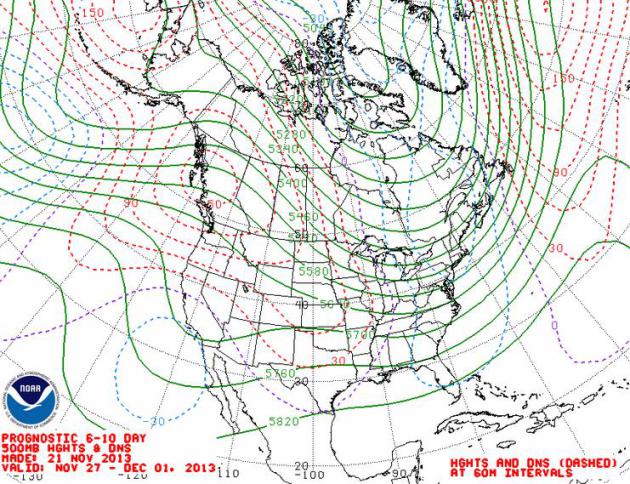
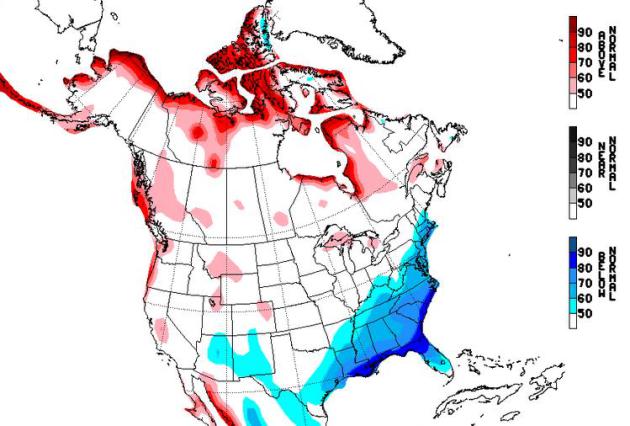

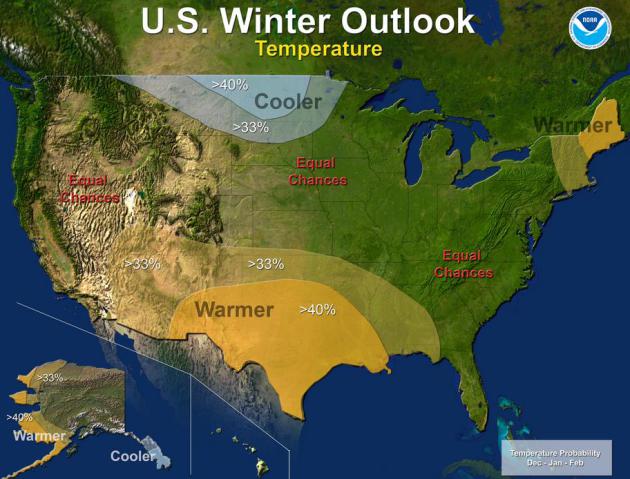

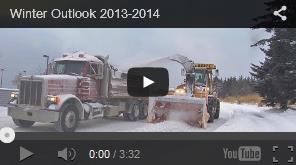

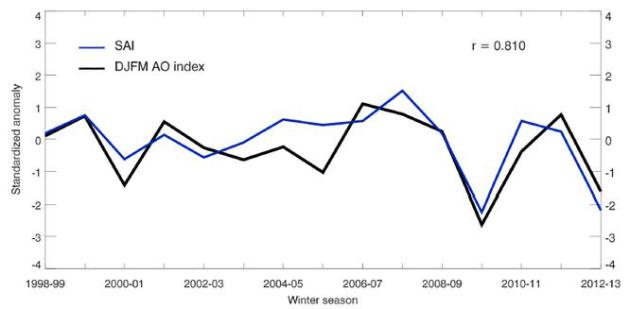
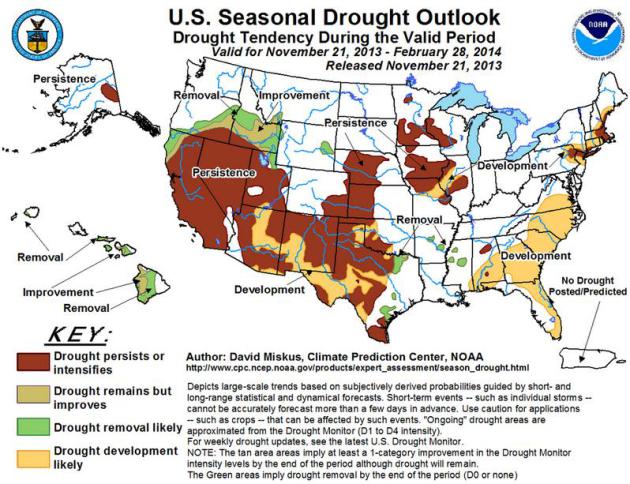
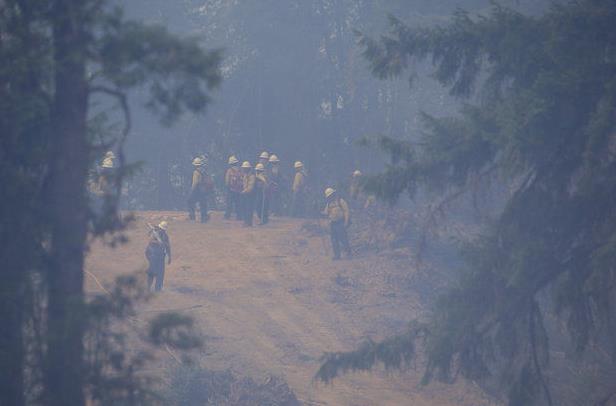
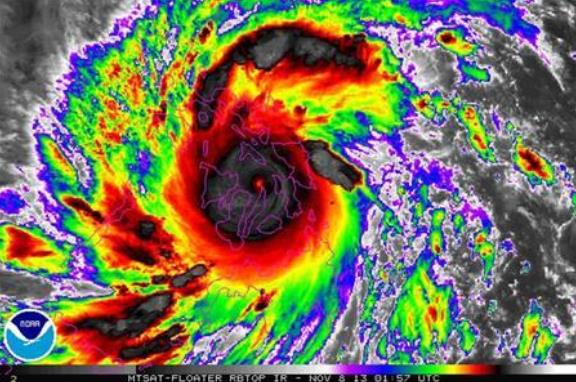
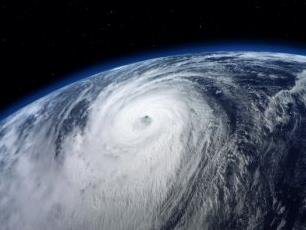


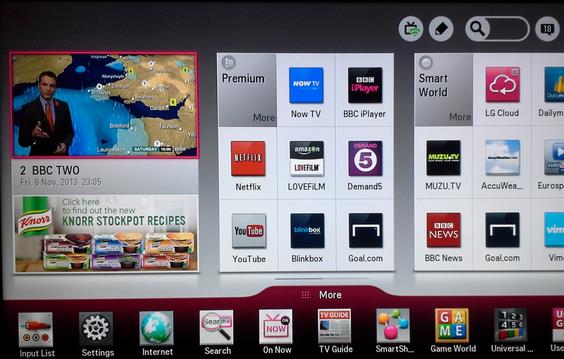


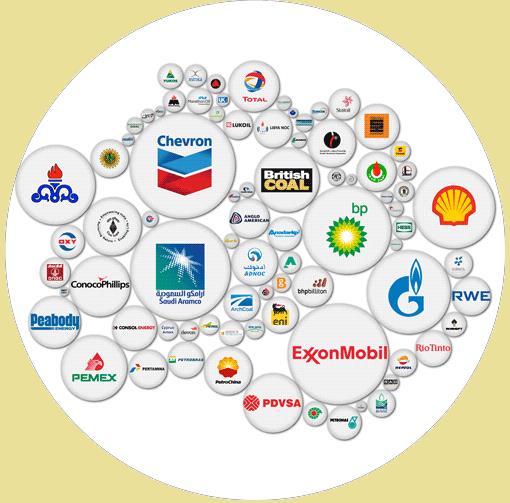
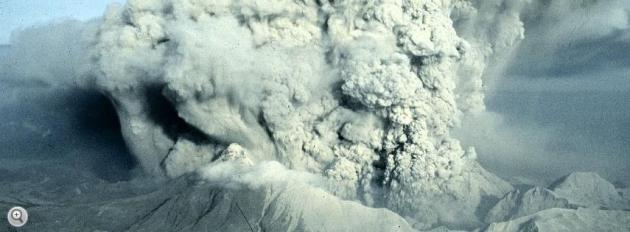

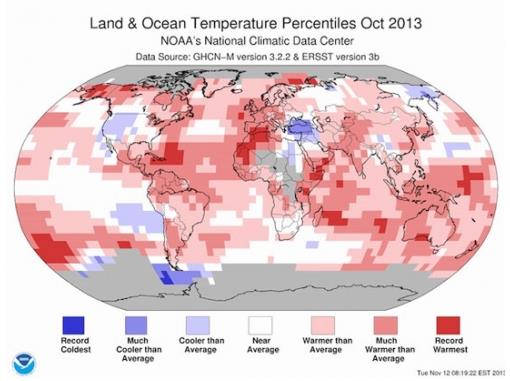

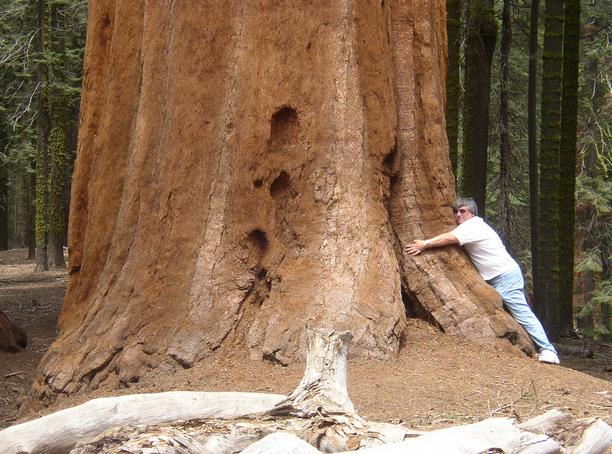


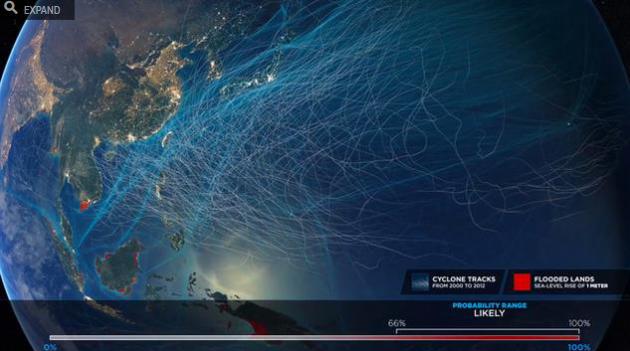

:S
ReplyDelete